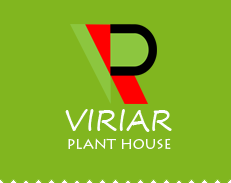VIRIAR
Sabal bermudana - Bermuda Palmetto - 15-25cm Live starter, Plant
Sabal bermudana - Bermuda Palmetto - 15-25cm Live starter, Plant
No se pudo cargar la disponibilidad de retiro
tropical palmPlant Description
Name: Sabal bermudana
Common Name: Bermuda Palmetto
Sabal bermudana, commonly known as the Bermuda Palmetto, is a large, evergreen palm native to the islands of Bermuda. It is one of the few species of palms that are endemic to the subtropical regions of the Atlantic. This palm is known for its impressive height, fan-shaped fronds, and ability to withstand harsh coastal conditions, including strong winds and salt spray.
The Bermuda Palmetto can reach heights of 10-20 meters (33-66 feet) with a thick, sturdy trunk that can be up to 60 cm (2 feet) in diameter. The trunk is typically smooth and grayish-brown, marked with the scars of fallen fronds. The crown consists of large, fan-shaped leaves (fronds), each measuring up to 2 meters (6.5 feet) across, with a blue-green hue. These fronds create a dense, rounded canopy that provides excellent shade.
This palm is an iconic species in Bermuda and plays a crucial role in the island's natural landscape. It is well-suited to coastal environments, making it a popular choice for seaside gardens and landscapes in similar climates.
Cultivation of Sabal bermudana
Conditions:
- Light: Sabal bermudana thrives in full sun. It requires at least 6-8 hours of direct sunlight each day to grow optimally and maintain its health.
- Temperature: This palm is hardy in USDA zones 9b-11. It can tolerate brief periods of cold, down to -6 °C (21 °F), but it thrives in warm, subtropical, or coastal climates.
- Soil: Sabal bermudana prefers well-draining, sandy, or loamy soils, although it can tolerate a range of soil types, including clay. It is highly tolerant of saline soils, making it ideal for coastal areas.
- Water: This palm is drought-tolerant once established but benefits from regular watering during its early growth stages. Ensure the soil dries out between waterings to avoid waterlogging. Overwatering can lead to root rot.
Planting and Care:
- Planting: Choose a sunny location with well-draining soil. When planting, dig a hole twice the width of the root ball and plant the palm at the same depth as it was in its container. Water thoroughly after planting. The Bermuda Palmetto is suitable for large gardens, parks, or coastal landscapes.
- Fertilization: Fertilize Sabal bermudana with a balanced, slow-release fertilizer designed for palms, applying in the spring and summer. Reduce or stop fertilization during the fall and winter.
- Maintenance: This palm requires minimal maintenance. Remove dead or damaged fronds to maintain a tidy appearance. The Bermuda Palmetto is resistant to most pests and diseases. It’s a slow-growing species, so it doesn’t require frequent pruning. Be mindful of its size and potential for spreading, as it can grow quite large over time.
Propagation
- Seed: Sabal bermudana is typically propagated from seeds. The seeds should be collected from mature, ripe fruit and cleaned before planting. Sow the seeds in a well-draining potting mix and keep them warm and moist. Germination can be slow, often taking several months.
- Transplanting: This palm can be transplanted successfully, especially when young. Ensure that the roots are not disturbed excessively during the process.
Shipping & Returns
Shipping & Returns




















